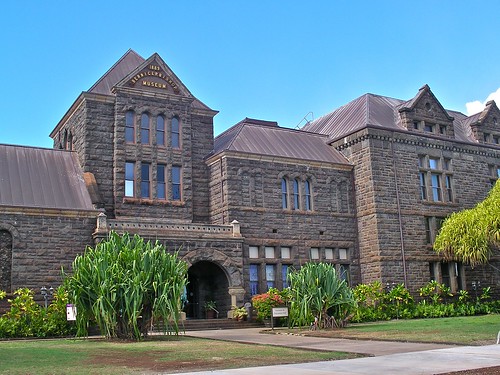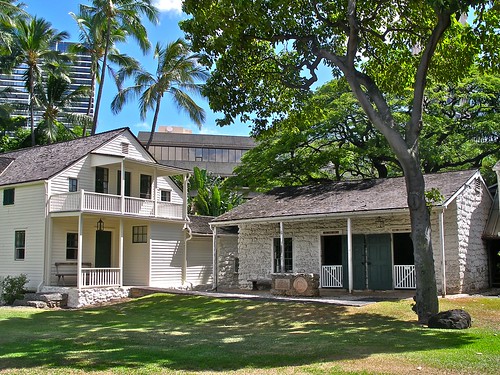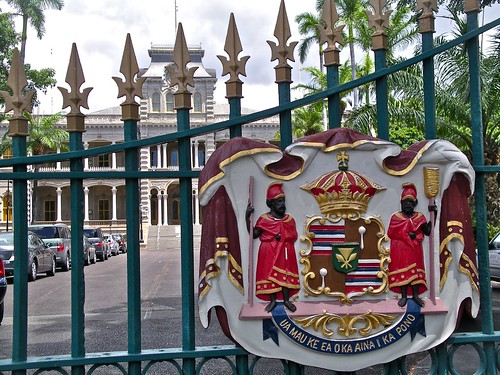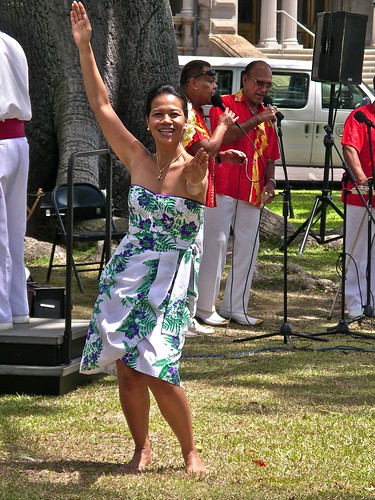Forget the kitschy song and dance show at the Hilton on Waikiki; it barely scratches the surface of the amazing richness and depth of Hawaiian natural and cultural history. Here are three recommended spots to wet your feet in what will hopefully be a lifelong interest in and admiration of this beautiful chain of islands.
Bishop Museum

Polynesia and Hawaii 101 starts here. Good thing there's not a quiz at the end ... there's much to learn.
Begin your exploration here. The Hawaiian Hall consists of three stories; the first floor covers mythical origins. As you ascend to the third story, beautiful, glass-enclosed exhibits reveal all aspects of Hawaiian life, history and culture with artifacts, documents, photos and more, including centuries-old feather capes worn by chiefs as well as wood and stone sculptures. Give yourself at least two hours to experience this hall alone. There's chock more on the museum grounds: additional galleries, kid-friendly activities, a planetarium and a science center.
If you can, take in an engaging story-telling presentation about an ancient chief intrinsically connected to the lineage that led to the museum's namesake, Princess Bernice Pauahi Bishop, who tirelessly devoted herself to charitable works and the preservation of Hawaiian culture. The storyteller speaks both in English and Hawaiian. Check the museum schedule for this and other daily presentations.
For more information, visit The Bishop Museum.
Mission Houses Museum

The main house and printing press; the house was built New England style with lumber from the mainland, which was very climate unfriendly for tropical Oah'u. A large kukui nut tree shades the grounds. Beware of falling nuts!
Life in Hawaii would forever change in the 1820s when the first missionaries built headquarters on King Street. Take the guided tour and see what a spartan life of work and religious devotion was like in the days when Christianity would begin to take a foothold. The homes are restored and feature Hawaii's first printing press, which initially produced primers on the Hawaiian language. Until westerners arrived, Hawaiian was a spoken language and in order to communicate, missionaries adopted the sounds they heard to the Roman alphabet. A copy of this primer is available for perusal in the museum.
For more information, visit The Mission Houses Museum
'Iolani Palace

The royal coat of arms bears this motto: "The life of the land is perpetuated in righteousness."
Take the docent guided tour of the only royal residence in the United States and learn about King Kalakaua and his successor sister Queen Lili'uokalani who held court and ruled Hawaii from this small but elegant palace, completed in 1879. Although Hawaiian culture had always been informed by social and political hierarchies, this relatively contemporary monarchy adopted the style of European royalty.
The docents make history come alive as you tour each room and discuss its function. The palace has been exquisitely restored and all the furnishings, if not original, are reproductions crafted from painstaking research. Particularly compelling is the room where Queen Lili'uokalani was imprisoned after a political struggle involving her subjects and the constitution. A haunting melancholy pervades this and other rooms in the upstairs section of the palace.

An elegant hula dancer performs with the Royal Hawaiian Band. The group plays traditional Hawaiian tunes with American jazz inflections.
If you cannot visit any of the other attractions, the 'Iolani palace is a must and comes with a few bonuses:
A great photo op: across the street, at the Ali'iolani Hale (Hawaiian Supreme Court), stands the magnificent statue of Kamehameha the Great, the first chief to unify the Hawaiian islands as a political unit.
And for an extra treat, visit the 'Iolani Palace on a Friday around noon to enjoy a free concert by the Royal Hawaiian Band, founded in 1836 by King Kamehameha III. The band performs on the grounds under the shade of an enormous tree. Before you go, check the schedule here.
Entry to the palace grounds is free of charge, but reservations and payment are required for the docent tour. For more information, visit 'Iolani Palace and Royal Hawaiian Band.
TIPS
Don't combine all three activities in one day; the Bishop Museum alone offers much information to absorb. You can easily tour 'Iolani Palace and Mission Houses in half a day, however. Both buildings are within a pleasant strolling distance of each other and you can stop at Kawaiaha'o Church, considered the "mother church" of Hawaii, in between both locations. The Mission Houses features a small garden café with light fare and refreshments.
Take note: interior photography and video is not permitted in any of the above mentioned locations.
You need to be a member of Tripatini to add comments!
Comments